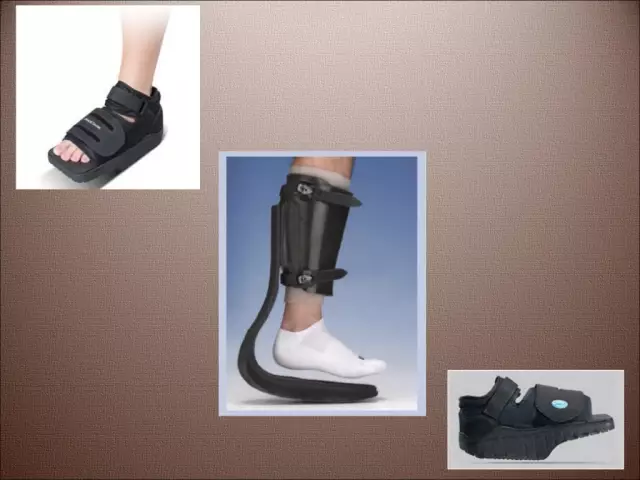- Author Rachel Wainwright [email protected].
- Public 2023-12-15 07:39.
- Last modified 2025-11-02 20:14.
Forliver Help
Forliver Help: instructions for use and reviews
- 1. Release form and composition
- 2. Pharmacological properties
- 3. Indications for use
- 4. Contraindications
- 5. Method of application and dosage
- 6. Side effects
- 7. Overdose
- 8. Special instructions
- 9. Application during pregnancy and lactation
- 10. Use in childhood
- 11. Drug interactions
- 12. Analogs
- 13. Terms and conditions of storage
- 14. Terms of dispensing from pharmacies
- 15. Reviews
- 16. Price in pharmacies
Latin name: Forliver Help
ATX code: A05BA03
Active ingredient: milk thistle fruit (Cardui mariae fructus)
Producer: NPO FarmVILAR, LLC (Russia)
Description and photo updated: 2020-19-03

Forliver Help is a hepatoprotective herbal preparation.
Release form and composition
The drug is produced in the form of tablets: round, biconvex, from light brown to brown, there are structural inclusions (10 or 15 pieces in blisters, in a cardboard box 2, 3, 4, 6, 8, 9 or 12 packs; 50 pieces in polymer cans, in a cardboard box 1 can. Each pack also contains instructions for the use of Forliver Help).
1 tablet contains:
- active substance: milk thistle fruit extract dry (silymarin extract dry) - 100 mg (the content of the sum of flavolignans is not less than 65% in terms of silybin);
- auxiliary components: potato starch, lactose monohydrate, magnesium stearate.
Pharmacological properties
Pharmacodynamics
Forliver Help is a herbal preparation for the treatment of liver diseases with hepatoprotective and antitoxic effects. Its therapeutic effect is due to the ability of silymarin to affect the metabolism of hepatocytes. Silymarin is a dry extract of milk thistle fruit that contains a mixture of flavolignans, including silidianin, silibinin, iso-silibinin, silicristin.
The drug has a stabilizing effect on the membrane of hepatocytes, promotes the activation of the synthesis of proteins and enzymes in hepatocytes, delays the penetration of toxins into liver cells, inhibits dystrophic processes of the liver, potentiates the regeneration of its cells.
Pharmacokinetics
After taking Forliver Help inside, silibinin is absorbed to an insignificant extent, during the first 24 hours only 2-3% of the dose taken is excreted in the bile. Up to 40% of silibinin released with bile as a result of cleavage by the intestinal microflora is reabsorbed again, which indicates its enterohepatic circulation. The maximum concentration of silibinin in plasma is reached after 3-4 hours.
The half-life is 6-8 hours. It does not accumulate in the body.
It is excreted mainly with bile, the rest through the kidneys.
Indications for use
The use of Forliver Help is indicated for chronic hepatitis, toxic liver damage, after hepatitis, as well as in the complex therapy of liver cirrhosis.
In addition, the drug is prescribed for prophylactic purposes with prolonged use of drugs, alcohol, chronic intoxication (including those associated with professional activities).
Contraindications
Absolute:
- lactose intolerance, glucose-galactose malabsorption, lactase deficiency;
- period of pregnancy;
- breast-feeding;
- age up to 12 years;
- individual intolerance to the components of the drug.
Forliver Help should be taken with caution by patients with diabetes mellitus, children over 12 years old.
Forliver Help, instructions for use: method and dosage
Forliver Help tablets are taken orally 0.5 hours before meals.
Recommended dosage: 1-2 pcs. 3 times a day. The duration of treatment is 25 to 30 days.
In the treatment of chronic diseases, it is advisable to carry out repeated courses of therapy after a break of 30-90 days.
Side effects
- from the immune system: allergic reactions;
- from the digestive system: laxative effect.
Overdose
Overdose symptoms Forliver Help have not been established.
Treatment: in the case of a single dose of a significant dose of the drug, it is recommended to immediately flush the stomach or induce vomiting, after emptying the stomach, take activated charcoal. If necessary, symptomatic therapy is prescribed.
special instructions
Forliver Help is recommended for use as directed by a doctor.
In cases of undesirable effects not described by the manufacturer, the pill should be stopped and the doctor should be consulted.
Patients with diabetes mellitus should take into account that in 1 tablet the carbohydrate content corresponds to 0.0082 XE (bread unit).
Influence on the ability to drive vehicles and complex mechanisms
During the period of application of Forliver Help, the ability of patients to drive vehicles or perform other potentially hazardous activities that require concentration of attention and high speed of psychomotor reactions is not impaired.
Application during pregnancy and lactation
The use of Forliver Help during pregnancy and lactation is contraindicated due to the lack of research results confirming the safety and efficacy of the drug in this category of patients.
Pediatric use
The use of Forliver Help tablets in patients under 12 years of age is contraindicated.
It is recommended to use the drug with caution for the treatment of children over 12 years of age.
Drug interactions
- diazepam, alprazolam, lovastatin, vinblastine, ketoconazole: the suppressive effect of the drug on the system of cytochrome P 450 isoenzymes can enhance the activity of the listed agents;
- oral contraceptives, medicines for hormone replacement therapy: may reduce their clinical effect.
Analogs
Forliver Help's analogs are Karsil, Karsil Max, Karsil Forte, Legalon 140, Legalon 70, Silibinin, Silimar, etc.
Terms and conditions of storage
Keep out of the reach of children.
Store at temperatures up to 25 ° C.
The shelf life is 5 years.
Terms of dispensing from pharmacies
Available without a prescription.
Reviews about Forliver Help
There are currently no reviews of Forliver Help from patients or specialists.
Price for Forliver Help in pharmacies
The price of Forliver Help for a package containing 30 tablets of 100 mg each can range from 245 to 339 rubles.

Maria Kulkes Medical journalist About the author
Education: First Moscow State Medical University named after I. M. Sechenov, specialty "General Medicine".
Information about the drug is generalized, provided for informational purposes only and does not replace the official instructions. Self-medication is hazardous to health!






